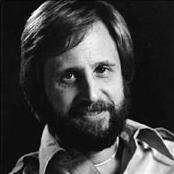Robert Abel (animator)
| Robert Abel | |
|---|---|
 | |
| Born |
March 10, 1937 Cleveland, Ohio, U.S. |
| Died |
September 23, 2001 (aged 64) Los Angeles, California, U.S. |
| Cause of death | Myocardial infarction [1] |
| Occupation | Film director |
Robert Abel (March 10, 1937 – September 23, 2001) was an American pioneer in visual effects, computer animation and interactive media, best known for the work of his company, Robert Abel and Associates.
Born in Cleveland, he received degrees in Design and Film from UCLA. He began his work in computer graphics in the 1950s, as an apprentice to John Whitney.[2]
In the 1960s and early 1970s, Abel wrote or directed several films, including The Making of the President, 1968, Elvis on Tour and Let the Good Times Roll.
In 1971, Abel and Con Pederson founded Robert Abel and Associates (RA&A), creating slit-scan effects and using motion-controlled cameras for television commercials and films. RA&A began using Evans & Sutherland computers to previsualize their effects; this led to the creation of the trailer for The Black Hole, and the development of their own software for digitally animating films (including Tron).[3]
In 1979 Abel defrauded Paramount Pictures of close to 6 million dollars after signing to do the special effects for the first Star Trek movie.
In 1984, Robert Abel and Associates produced a commercial named Brilliance for the Canned Food Information Council for airing during the Super Bowl XIX telecast. It featured a sexy robot with reflective environment mapping and human-like motion.[4]
Abel & Associates closed in 1987 following an ill-fated merger with now defunct Omnibus Computer Graphics, Inc., a company which had been based in Toronto.
In the 1990s, Abel founded Synapse Technologies, an early interactive media company, which produced pioneering educational projects for IBM, including "Columbus: Discovery, Encounter and Beyond" and "Evolution/Revolution: The World from 1890-1930".
He received numerous honors, including a Golden Globe Award (for Elvis on Tour), 2 Emmy Awards, and 33 Clios.
Abel died from complications following a myocardial infarction at the age of 64.[3]
References
- ↑ https://books.google.com/books?id=ZHnGCwAAQBAJ&printsec=frontcover&dq=Obituaries+in+the+Performing+Arts,+2002:+Film,+Television,+Radio,+Theatre+...&hl=en&sa=X&ved=0ahUKEwjAlPm8qafcAhXCpFkKHcpNCfgQ6AEILzAB#v=onepage&q=Robert%20Abel&f=false
- ↑ Wolff, Ellen (October 2001). "Remembering Robert Abel". Millimeter. p. 10.
- 1 2 Coyne, Patrick (January–February 2005). "Design Pioneers: Robert Abel". Comm Arts. Coyne & Blanchard, Inc. Archived from the original on October 9, 2007. Retrieved 2014-02-15.
- ↑ "Commercials: How They Changed Film Production Forever" (PDF). Creative Cow. pp. 10–12, 43. Retrieved 2008-10-09.
External links
- Robert Abel on IMDb